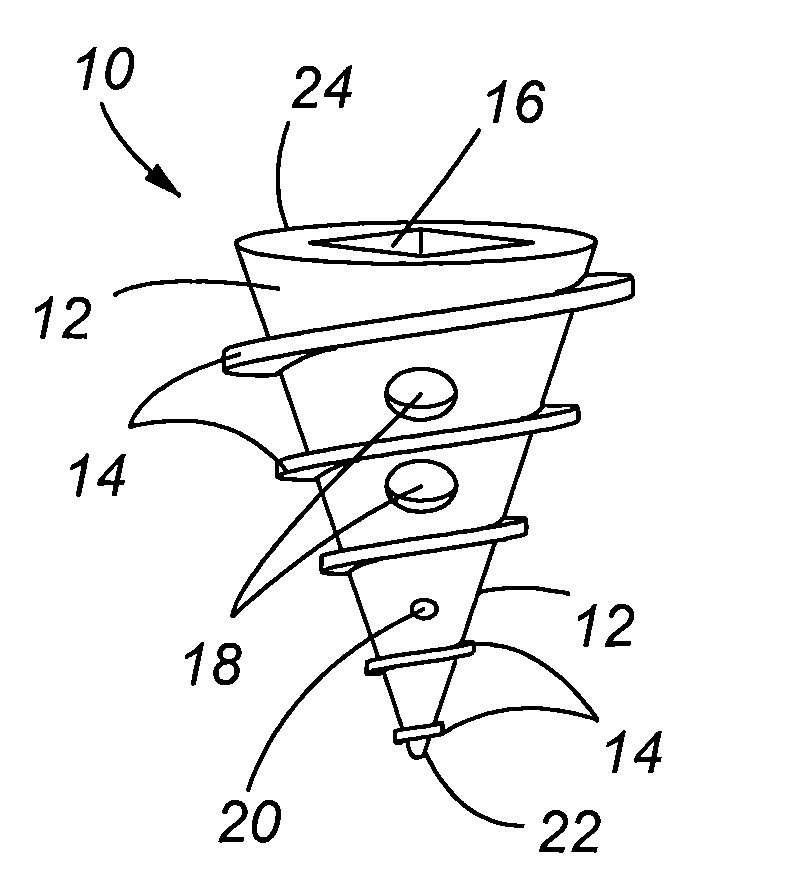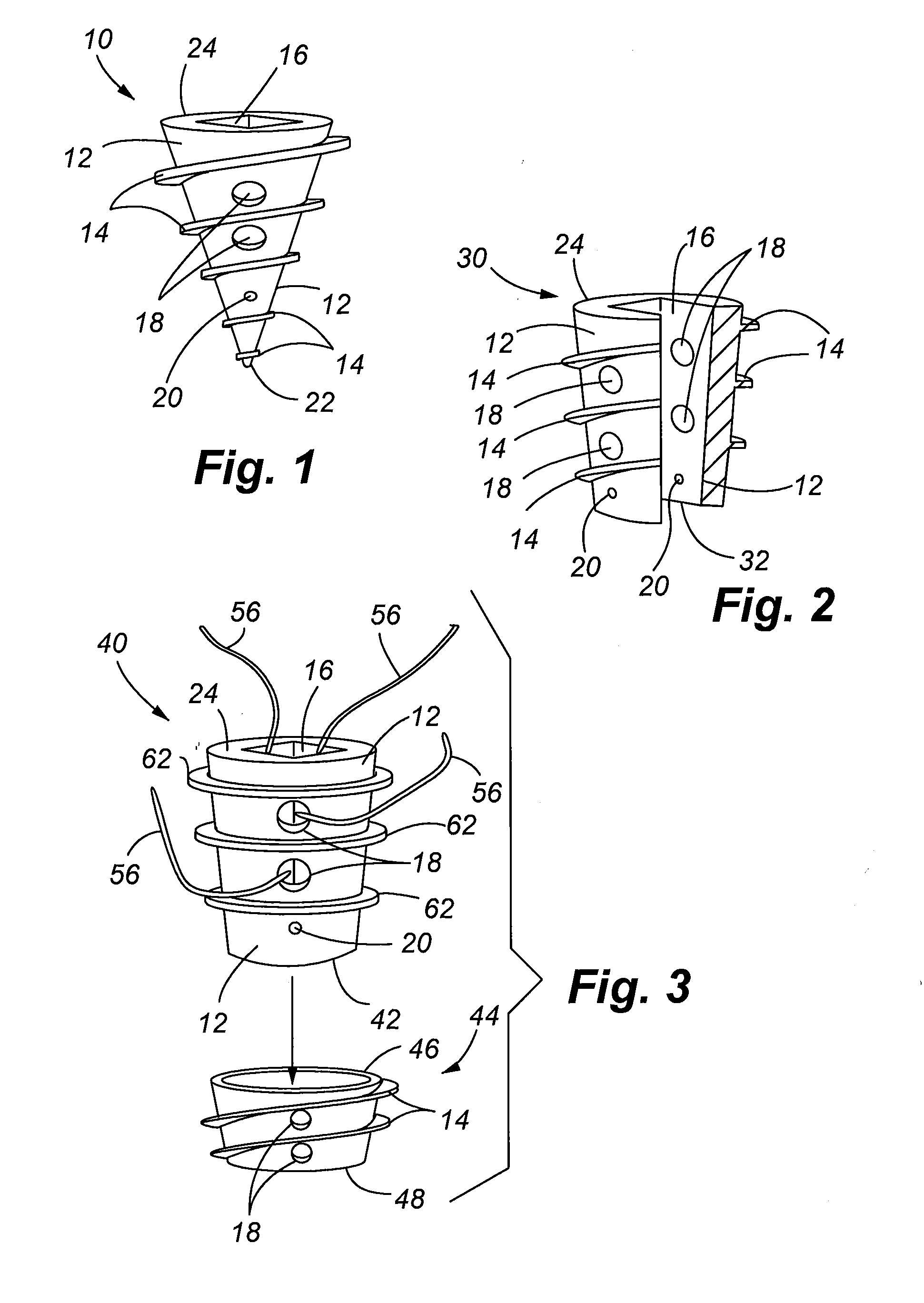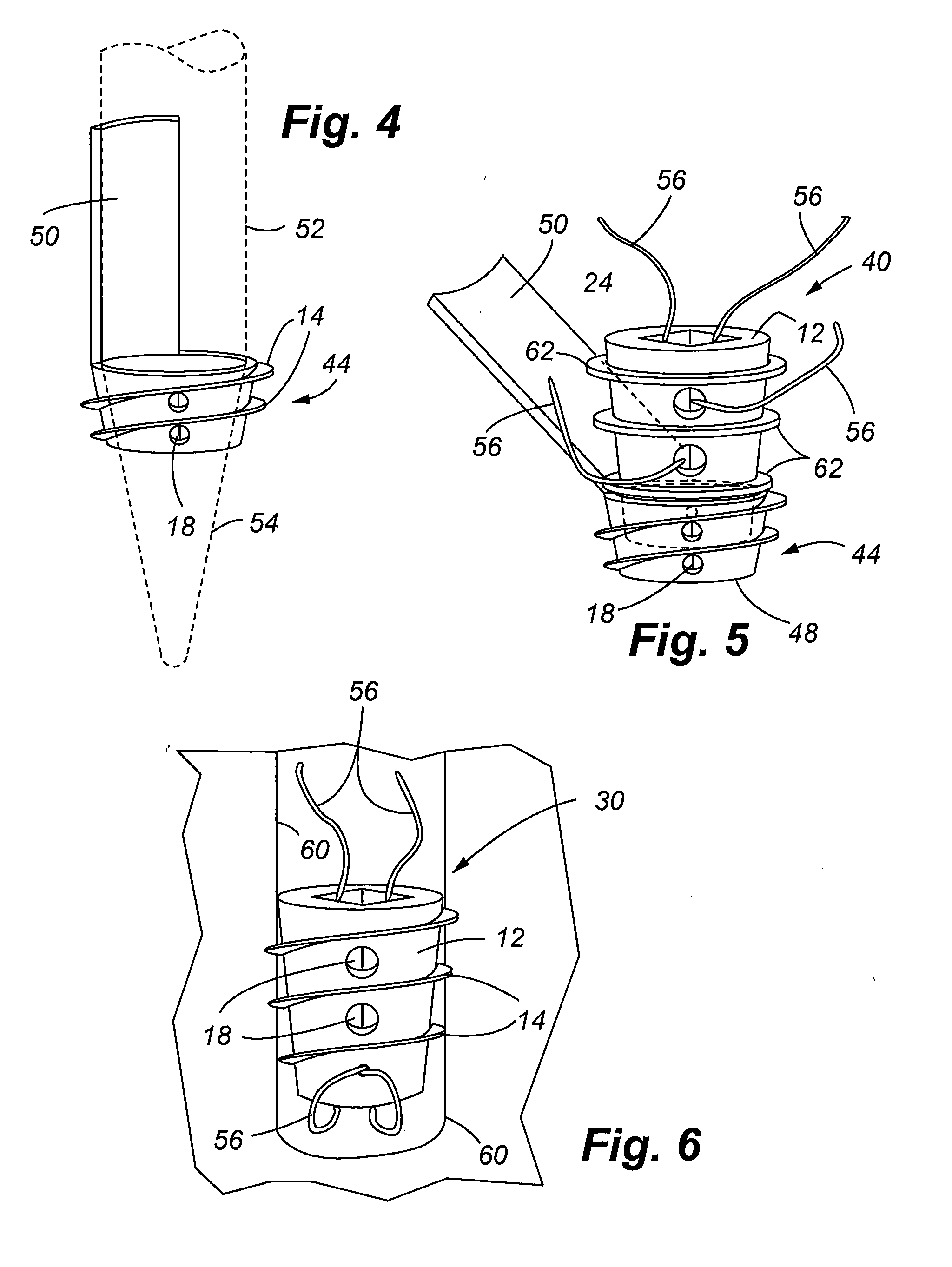Bioelectric implant and method
a bioelectric implant and implant technology, applied in the field of bioelectric implants, can solve the problems of increasing the cost of orthopedic implants, and limiting so as to improve the ability of implants to stabilize bone and tissue healing.
- Summary
- Abstract
- Description
- Claims
- Application Information
AI Technical Summary
Benefits of technology
Problems solved by technology
Method used
Image
Examples
first embodiment
[0041]FIG. 1 illustrates the bioelectric implant 10 of the present invention. The bioelectric implant 10 is characterized by a body 12 which comprises the cathode portion, and a central opening 16 that is coated with a dissimilar metal, thereby forming an anode portion. Preferred materials for the cathode may include titanium, steel, cobalt, molybdenum, metal oxides, or alloys thereof. Preferred materials for the anode portion may include magnesium, zinc, or alloys thereof.
[0042]The first embodiment is further characterized as having a larger end 24, and a smaller end or tip 22. The embodiment of FIG. 1 shows the body 12 having a substantially conical shape; however, it shall be understood that the particular shape of the body 12 may be modified for the intended use of the implant. For example, the body 12 could be cylindrical shaped, and further, instead of the tip 22 being closed, it is contemplated that the central opening 16 could extend completely through the body, thereby resu...
second embodiment
[0045]FIG. 3 illustrates yet another preferred embodiment of an implant 40 of the present invention, like reference numbers in this embodiment also denoting the same structural features found in the prior embodiments. The implant 40 in this embodiment has two components or parts, namely, a distal lock ring 44, and a body 12 which resembles the body 12 in the embodiment of FIG. 2. However in this second embodiment, the body 12 incorporates a plurality of ribs 62 as opposed to threads 14. The ribs 62 are used to lock the body 12 in the distal locking ring 44. The ribs also serve as anchoring features. The locking ring 44 is connected to the body 12 to form a single larger implant. The body 12 includes the truncated end 42 which frictionally engages the receiving end 46 of the distal lock ring as by contact of one or more ribs 62 that are received within the central opening of the locking ring 44. The conical shape of the body 12 may be adjusted to provide contact with the desired numb...
PUM
 Login to View More
Login to View More Abstract
Description
Claims
Application Information
 Login to View More
Login to View More - R&D
- Intellectual Property
- Life Sciences
- Materials
- Tech Scout
- Unparalleled Data Quality
- Higher Quality Content
- 60% Fewer Hallucinations
Browse by: Latest US Patents, China's latest patents, Technical Efficacy Thesaurus, Application Domain, Technology Topic, Popular Technical Reports.
© 2025 PatSnap. All rights reserved.Legal|Privacy policy|Modern Slavery Act Transparency Statement|Sitemap|About US| Contact US: help@patsnap.com



